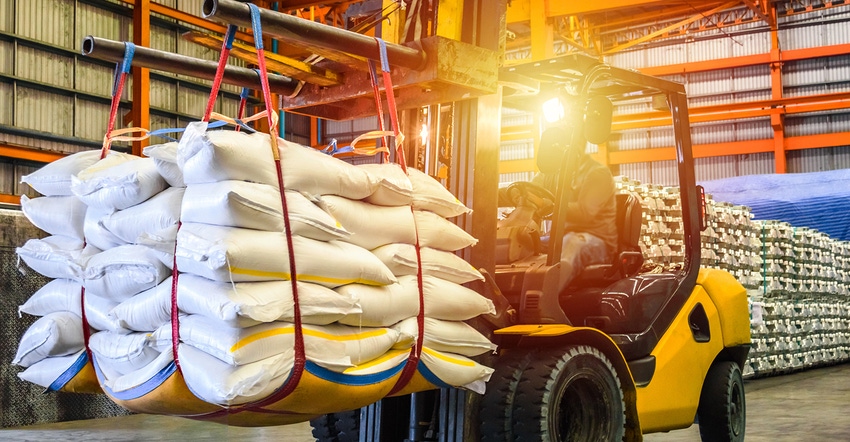Qualities to consider when ordering raw materials
This article addresses a basic list of qualities that manufacturers should check when ordering materials, including company appraisal, identity, purity, potency, freshness, composition and value.
April 16, 2015

Raw materials are the backbone of your products. No matter how well you manage your manufacturing and distribution processes, if your raw materials are sub-par, your product may not be as efficacious or successful as you had envisioned. Per 21 CFR 111.70, you must establish specifications for identity, purity, potency and composition. Once the specifications are established, you must test for them to demonstrate that the supplier’s Certificate of Analysis (CoA) and the material meets the specifications.
This article addresses a basic list of qualities that you should check when ordering materials, including: company appraisal, identity, purity, potency freshness, composition and value.
Company appraisal
It’s important to buy from a reputable company that will be able to supply the materials every time. Suppliers should be audited to ensure they handle materials under sanitary conditions and have accurate records. It is preferable to perform on-site audits; but, for distributors that purchase materials from foreign countries, audit questionnaires are sometimes used to ensure the distributor has audited the manufacturing facility. Because the dietary supplement industry uses natural ingredients that may fluctuate in availability, a second supplier is often vetted toallow purchasing flexibility that meets set standards.
Identity
One requirement is demonstrating that the material used is indeed the material claimed. Identity tests range from organoleptic to very specific tests such as HPLC (high performance liquid chromatography) or IR Spectroscopy. For herbs, be sure the Latin name and the plant part match the label claim. Companies that do not have an in-house laboratory should send the samples to a certified third-party lab for ID testing.
Purity
Purity confirms that the material is fit for consumption and is free of contaminants such as microbial contamination or excess heavy metals. Purity test methods are established by authorities such as USP or AOAC and may be modified to meet a company’s equipment requirements. Microbial contamination tests typically include total plate count, yeast and mold, Salmonella, E. coli and coliforms. Heavy metal tests typically include lead, cadmium, arsenic and mercury. Again, companies without an in-house laboratory should send the samples to a third-party laboratory for testing.
Potency
When using a material that has a daily value (a vitamin or mineral) or claiming a component of a material (i.e., choline from choline bitartrate or ginsenosides from ginseng), it is necessary to ensure the material contains the correct amount of that component. Compare the test method on the CoA against published test methods from authorities such as USP or AOAC to be sure it is the most applicable test. Some tests, such as UV-Vis, are more general in nature and may report higher values than more specific tests such as HPLC. Third-party lab testing can be used in this instance as well.
Shelf life
The expiration or re-certify date should be on the supplier’s CoA. While most materials do not “spoil," many are not guaranteed for potency after the date. Products with a long distribution or shelf life raise the bar on ensuring the raw materials can meet label claims until the product’s expiration date. If you have raw material on hand that is nearing its expiration date, check with the supplier or a third-party lab to determine whether the material can be recertified and the best test method to do so.
Composition
Each product has unique requirements. Perhaps it’s a powder that needs all the ingredients to be a certain mesh size or have very low moisture content. It might be a chewable tablet where the actives need to be in forms with little or no taste. Marketing may be claiming the product is gluten-free or organic. Set the specifications of the product and the individual raw materials early in the design process to ensure sourcing consistency. Raw material CoAs often list more specifications than required. Raw material files should note the exact specifications required, so that in the event the purchasing team needs to find a new supplier, they will request the desired information.
Value
Products need to be consistent. While it may be more economical in the short term to buy raw materials on price alone, a material that is a little more expensive but gives consistently high quality materials from the same supplier for every lot may be the better value in the long run. Consider the target market and the expected product life cycle when choosing raw materials. An inexpensive entry version of a product may be able to use materials with less strict specifications while top-of-line products may need higher end materials. This is a choice that marketing, product development and finance will need to decide as a team.
Your products represent your company. By accurately and thoroughly specifying and qualifying suppliers and raw materials, those products will be best suited for their intended use and target market.
Mary Galloway, naturopathic physician and science and compliance manager at Pacific Nutritional in Vancouver, Washington ([email protected]), has more than 12 years of experience formulating supplements containing vitamins, minerals, herbs, proteins, fibers and specialty actives in tablet, capsule and powder forms.
About the Author(s)
You May Also Like




.png?width=800&auto=webp&quality=80&disable=upscale)